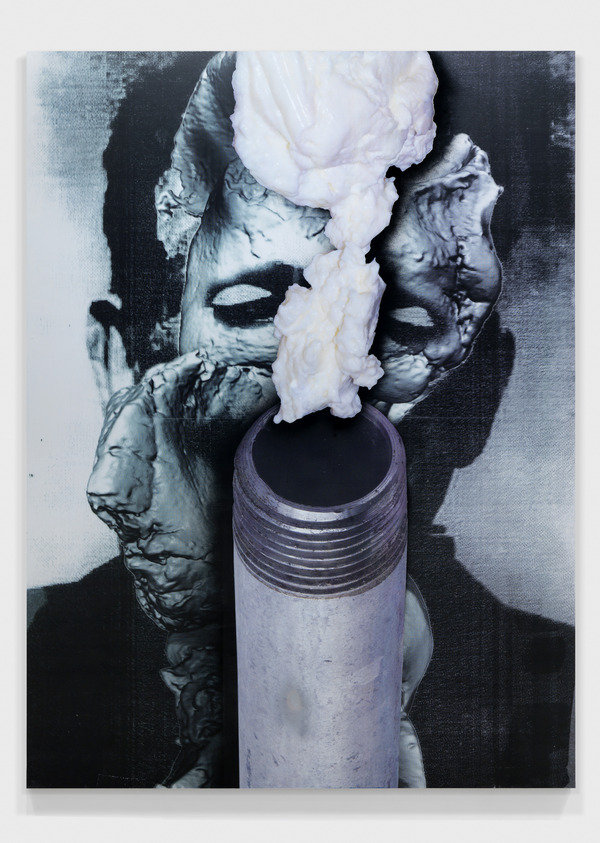Urs Fischer
dal 15/2/2012 al 27/5/2012
Segnalato da
15/2/2012
Urs Fischer
Kunsthalle Wien, Wien
Skinny Sunrise. In his work private becomes public, stone turns into bread, and everyday commodities collapse into flat reproductions to decorate minimal objects. In a sculptural balancing act, the Swiss-born artist grapples with size, gravity, and volume. A yellow teddy bear weighing several tons in the midst of Manhattan; a house made of bread placed in the public space of Vienna; images of mundane subjects like donuts, London telephone booths...

curated by Gerald Matt and Angela Stief
I believe that art is like people: you can’t reduce it to a couple of sentences—art is much more complex and rich.
Urs Fischer
Urs Fischer’s multimedia art, which is grounded in sculpture despite the artist’s training as a photographer, offers
grand gestures with a pop attitude. A yellow teddy bear weighing several tons in the midst of Manhattan; a house
made of bread placed in the public space of Vienna; images of mundane subjects like donuts, London telephone
booths, and crumpled Diet Coke cans precisely rendered via silkscreen on mirrored chrome boxes—in Fischer’s
work of opposites, transformations of material, media, and scale are not uncommon. Private becomes public, stone
turns into bread, and everyday commodities collapse into flat reproductions to decorate minimal objects. In a
sculptural balancing act, the Swiss-born artist (b. 1973) grapples with size, gravity, and volume. Fragile and floating
objects seemingly suspended in the air—works in which the shadow is a fundamental aspect of their form—live next
to gigantic amorphous sculptures cast in aluminum and steel.
Fischer has been known to cut holes through walls (à la Gordon Matta-Clark) and erode the floors of the exhibition
space in interventions that recall land art of the 1960s and ’70s. He is less interested in radical aesthetic measures or
art historical cross-referencing that could easily relate him to Franz West, Dieter Roth, or Francis Picabia, but rather
finds inspiration in artistic alliances that bridge time and place. For nearly every positioning of his work one runs into a
companion piece: bodylike walls with bulging scars, floating pink clouds, and installations of countless
monochromatic raindrops suspended in midair bear witness not to the bombastic, but to a sensitive artistic
intervention.
However, there are also constants without counterparts in Fischer’s work. Over the years certain motifs such as
chairs, cats, candles, and still-lifes are repeated in multiple, often-awkward variations—they seem like an agitated
ode to everyday life. Certain forms are proclaimed, though never forced. Handcrafted fabrication, flawless mechanical
execution, found images, and objets trouvé go hand in hand, never without a hint of irony.
Fischer’s art makes an important contribution to the discourse of form as defined by Georges Bataille’s principle of
l’informe. Probing the aesthetic frontiers between object and art, he aims at destabilizing content and form, and
integrates in his art anarchistic detonators that reduce identifiable thought and action to absurdity. Occasionally
dismissing static concepts of artworks, he indulges in anti-form, illustrates processes, and depicts fusion and
dissolution: wax figures melt, as does the streetlight made from cast aluminum whose surface, like erupting magma,
seems to have gotten out of hand—Frozen Pioneer—a mutation frozen in flux.
Fischer’s creative urge transcends the work by means of reference; it oscillates between abstraction and figuration
and is both static and dynamic. Rather than imposing his own will onto his work, he searches for each work’s
singular momentum, cultivating apparent accidents and incorporating chance as an integral part of his production.
Fischer questions the creation of values added to art, as when a fruit sculpture rots during the run of the exhibition or
when a seemingly benign installation of a spotlight projects the shadow of a banana or ladder onto a wall. His choice
of unconventional materials—including styrofoam, mirror glass, lacquer, and glue, as well as wax—imbues the work
with a sense of temporality. The transience of life is also evident in motifs such as the skeleton of Skinny Sunrise—in
the Kunsthalle exhibition he will for the first time show a self-portrait, another burning candle sculpture. Nothing
remains the same, as the title of another of his works—Thank You Fuck You—reminds us.
Urs Fischer has previously participated in exhibitions at the Kunsthalle, including Dream & Trauma. Works from the
Dakis Joannou Collection (2007) and Skulptur. Prekärer Realismus zwischen Melancholie und Komik (2004). This solo
exhibition offers a retrospective of his extensive work from the beginnings of his creative production to new works.
Urs Fischer’s work has been shown in solo exhibitions at the New Museum in New York (2009), the Museum
Boijmans Van Beuningen in Rotterdam (2006), the Hamburger Bahnhof in Berlin (2005), the Kunsthaus Zürich (2004),
and the Centre Pompidou in Paris (2004). He has participated in important group exhibitions such as the Venice
Biennale (2011, 2007, 2003) and the Whitney Biennial, New York (2006). He is represented by Galerie Eva
Presenhuber, Zurich; Sadie Coles HQ, London; Gavin Brown’s enterprise, New York; and the Modern Institute,
Glasgow. He lives and works in New York.
Catalogue: Urs Fischer. Skinny Sunrise. With an interview by Gerald Matt. German/English; published by Kiito-San.
Image: Urs Fischer, Chemical Wedding, 2009, Collection Michaela Neumeister, Berlin © Urs Fischer. Courtesy of the artist and Galerie Eva Presenhuber, Zurich. Photo: Mats Nordman.
Information and photographic material: Claudia Bauer, KUNSTHALLE wien, office: Museumsplatz 1,
A-1070 Vienna, phone: +43-1-521 89-1222, fax: +43-1-521 89-1217, e-mail: presse@kunsthallewien.at
Press Conference: Thursday, February 16, 2012, 10 a.m.
Opening: Thursday, February 16, 2012, 7 p.m.
Kunsthalle Wien
Museumsplatz 1, 1070 Wien
Daily 10 a.m. – 7 p.m., Thurs 10 a.m. – 9 p.m.



